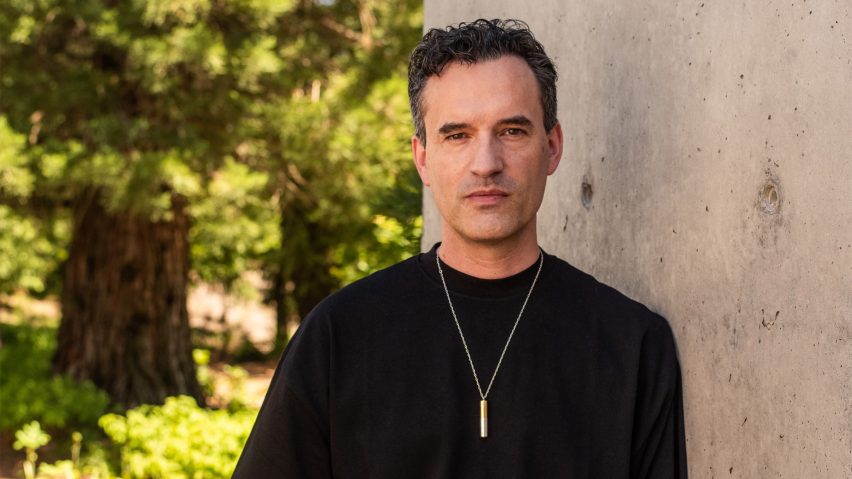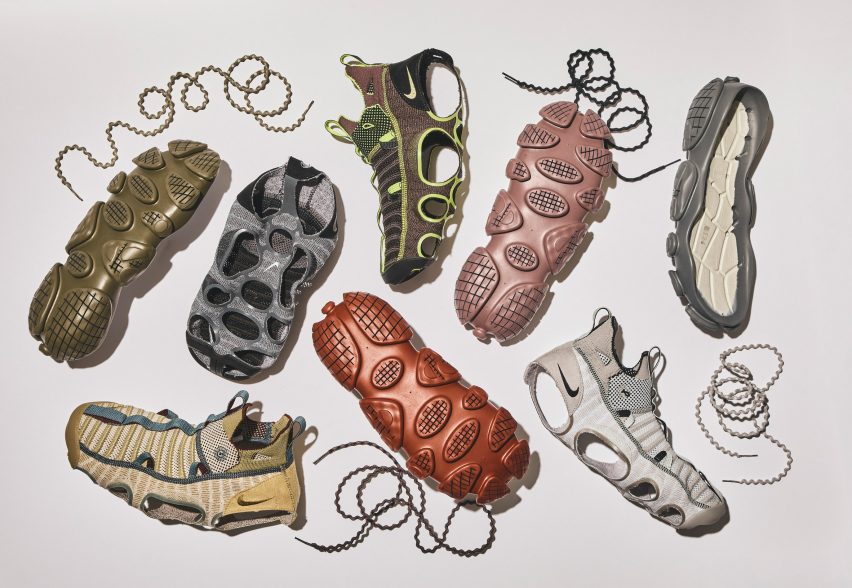
Recycled materials will give Nike "biggest impact" on sustainability says chief design officer
Using recycled materials is a better route to reducing the environmental impact of Nike's products than designing for disassembly, the sportswear brand's chief design officer Martin Lotti says in this interview.
Sitting down with Dezeen at the unveiling of Nike's footwear collection for the Paris 2024 Olympic Games, Lotti suggested that the priority for his designers should be focusing on sustainability measures that can be applied to the company's vast manufacturing output.
"I want to make sure that we don't just create concept cars"
"The biggest area where we can have an impact in the amount of products we create is how we choose materials," he said. "So 80 per cent of the impact that we can have on sustainability in our products is what materials we choose."
For shoes in particular, design for disassembly is becoming a hot topic among advocates of a circular economy – where waste is eliminated and materials reused.
Almost all shoes are currently impossible to separate into their constituent materials at the end of their life, meaning they cannot be recycled and instead head to landfills where they take decades to decompose.
Nike is the largest shoe manufacturer in the world, reportedly producing around 800 million pairs a year.
It has previously experimented with design for disassembly via the glueless ISPA Link and ISPA Link Axis trainers, unveiled in 2022. Since 1992 it has also operated Nike Grind, a project to repurpose waste materials from its shoes, often as flooring for gyms or sports courts.

But Lotti told Dezeen that while pushing for circularity is a "valid path", replacing virgin polyester with recycled polyester is currently a more effective way of reducing planetary impact across its huge production lines.
"I want to make sure that we don't just create a few 'concept cars' that are amazing," he said.
"If the goal is to make the world better, well then let's make the world better. And that does not apply only to a few, it should apply to the many. And to the many is our biggest impact."
"And many of our shoes we're doing right now, 80 per cent of the materials we have have recycled content in it. But it's really focusing on the scale to make a difference, not just on the few."
In April, a Missouri judge threw out a class-action lawsuit against Nike that alleged that most of the products in its Sustainability Collection are not made from recycled materials in contradiction of the brand's claims, citing a lack of evidence.
According to Nike's most recent impact report, its total emissions for the 2023 financial year were 9.54 million metric tonnes of CO2 or equivalent – down from 10.04 million the previous year, but still more than in 2015.
As part of its Move to Zero sustainability initiative, the company has identified the use of "environmentally preferred materials" as a key path to cutting its greenhouse gas emissions. Other measures include switching to renewable energy in its warehouses.
"Anything we do has to be with circularity and sustainability in mind – I don't think you can separate it anymore," said Lotti. "It's just a part of creating a good product."
As Nike's chief design officer, Switzerland-born Lotti directly oversees a team of more than 600 designers.
"If we're designing shoes, we look at anything but shoes"
To maintain the creative dynamism required to innovate within such a large corporation, Lotti has a golden rule when it comes to looking for new ideas.
"We go on inspiration trips, and the one rule I have as we go out is that if we're designing shoes, we look at anything but shoes," he said.
"Because human nature will be that if you see something and you like it, you're probably going to do a version of it. But if we are meant to innovate and bring the new, then I'd much rather look at nature, art, cars – you name it."
On a personal level, Lotti has a particular interest in architecture that he inherited from his father, who was an architect.
He also advocates for a data-led approach to design.
"[You take] different expressions and different cultures, or different inputs, and then you connect it back with the athlete insights," he explained.
"And after the data, then it becomes interesting," he added. "Then it allows us to really innovate and create, and I think Nike is at its best when we don't chase trends, but set trends."
Lotti is also unfazed by the mind-boggling size of the audience he is designing for.
"I actually don't see it as a challenge," he said. "I will put the exact same amount of energy into a project if we're planning on selling one or two, or 100 million."
"The same effort will go into it, the same methodology and approach will go into it," he added. "I do what I can control and do my best, that's all I can do."
The photography is courtesy of Nike.
Dezeen In Depth
If you enjoy reading Dezeen's interviews, opinions and features, subscribe to Dezeen In Depth. Sent on the last Friday of each month, this newsletter provides a single place to read about the design and architecture stories behind the headlines.